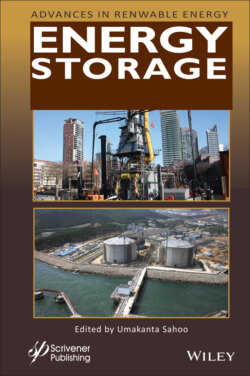Читать книгу Energy Storage - Группа авторов - Страница 23
1.3.1.1 Active Two-Tank Direct
ОглавлениеIn an active two-tank direct system, solar radiation is converted to thermal energy and the thermal energy is stored in the same fluid which was used to collect it. The fluid is stored in two tanks, one at high temperature and the other at low temperature. Fluid from the low-temperature tank flows through the receiver and gets heated to a high temperature [Figure 1.7]. Thereafter the hot fluid flows to the high-temperature tank for storage. Fluid from the high-temperature tank flows through a heat exchanger. In the heat exchanger the fluid loses heat to generates steam which is further used for electricity production. The cold fluid exits the heat exchanger and returns to the low-temperature tank to continue the cycle.
Figure 1.7 Active two-tank direct thermal energy storage.
Concentrating solar power (CSP) projects that use parabolic trough systems such as Archimede, ASE Demo Plant, Chabei, Gansu Akesai, Solar Electric Generating Station I (SEGS I) use active two-tank direct thermal energy system [see Table 1.1]. Dacheng Dunhuang Molten Salt Fresnel project used two-tank direct storage with a storage capacity of 13 hours and Molten Salt as the heat transfer fluid. Such storage systems have attracted a great deal of attention from power tower receiver concept. Power tower projects such as Atacama-1, Aurora Solar Energy Project, Copiapó, Crescent Dunes Solar Energy Project (Tonopah) implement two-tank direct storage system. Currently, 20% of the commercial plants use two-tank direct TES system for energy storage, and the summary of all plants is listed in Tables 1.1, 1.2 and 1.3.
